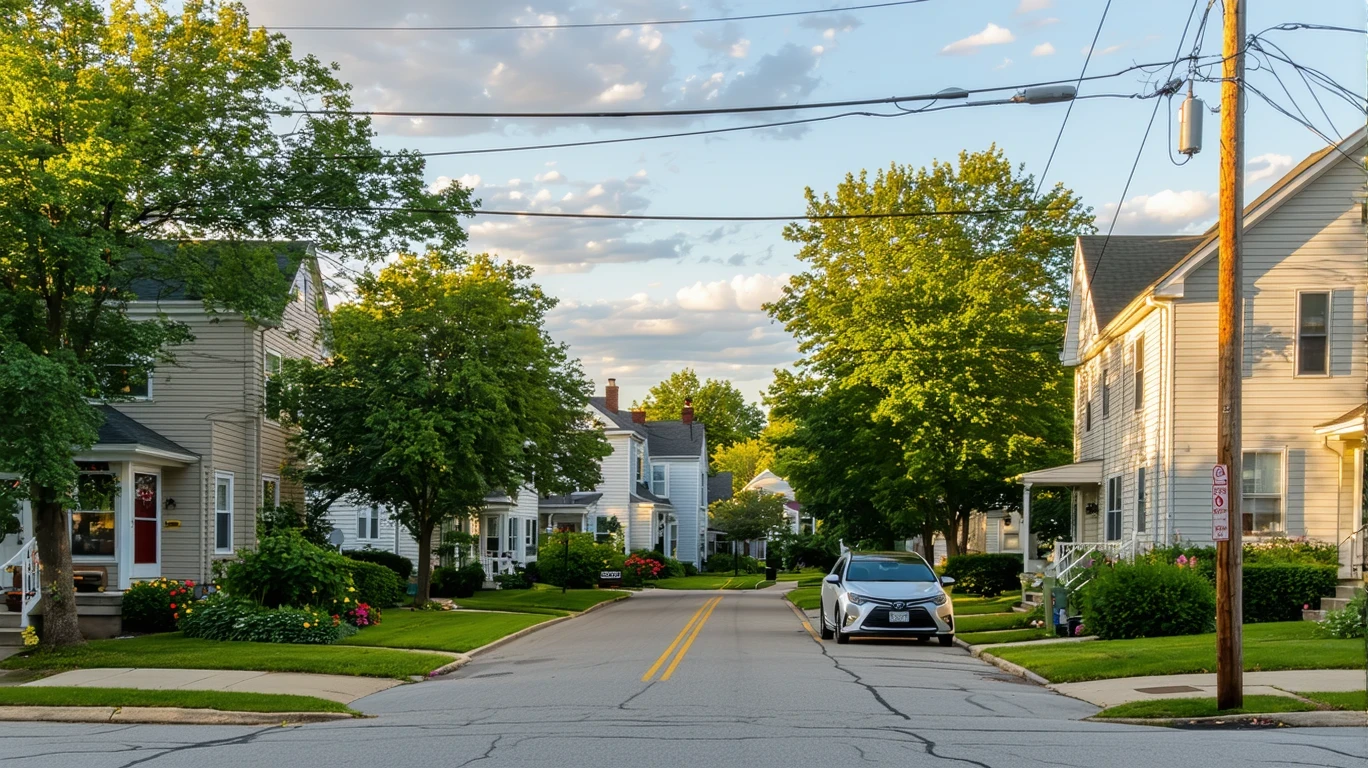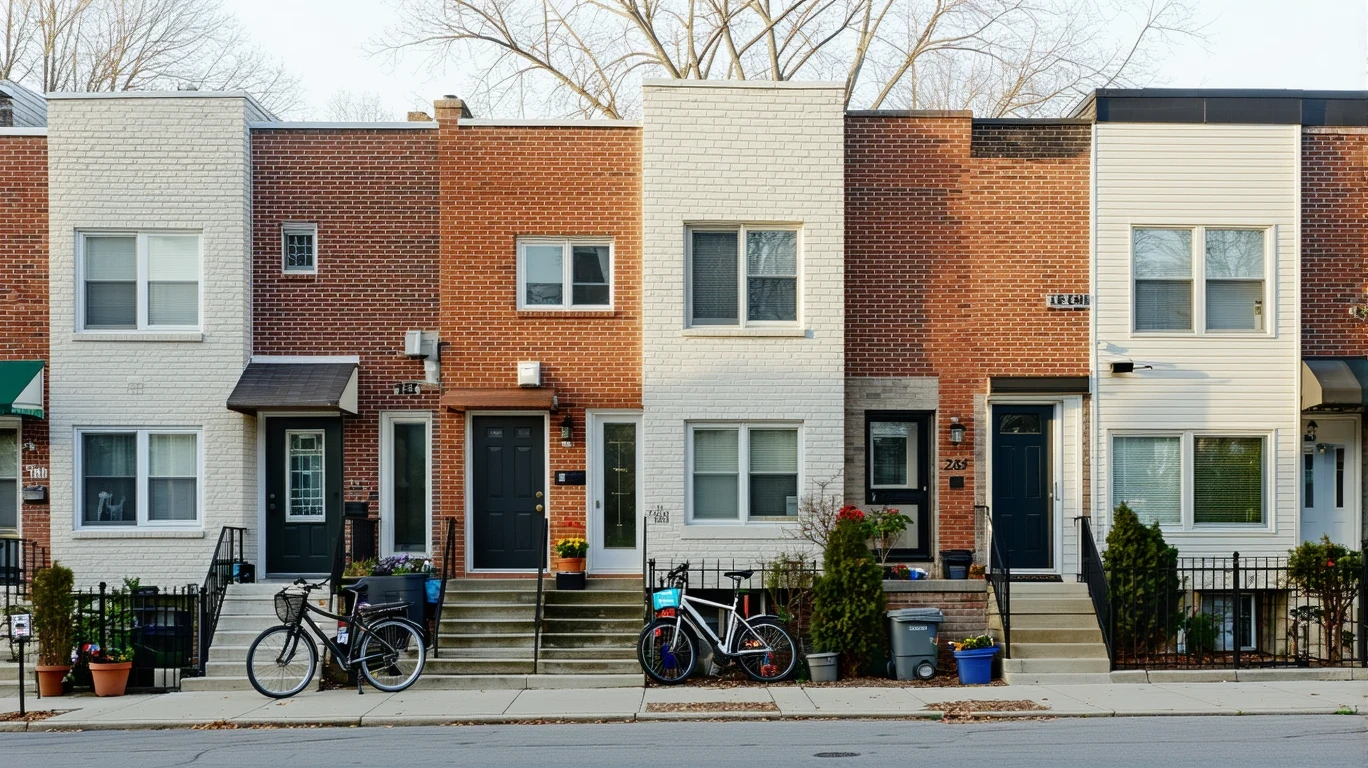
—
Arlington, VA vs. Washington, DC: Cost of Living Comparison (2025)
Imagine two professionals: Sarah, renting a 1-bedroom in Arlington for $2,100/month, and David, paying $2,400 for a similar place in Washington, DC. At the grocery store, Sarah’s weekly essentials run about $80, while David typically spends over $100.
This snapshot illustrates the real cost differences many face when choosing between Arlington and Washington in 2025. As close neighbors in the DC metro area, the two cities attract a mix of government workers, young professionals, and families. But while both offer urban amenities and a strong job market, their living costs diverge in key ways.
For those relocating to the capital region or debating a move across the Potomac, housing and daily expenses are central budget factors. As prices continue to climb in the 2020s, even a modest rent or grocery gap can add up to thousands saved or spent each year. So which city comes out ahead in 2025? Let’s break it down, category by category.
Housing Costs: Rents and Mortgages in Arlington vs. DC
Housing is the biggest line item for most Arlington and DC residents. While both are pricey markets, Arlington offers relative savings for renters and buyers alike. As of 2025, the typical rent for a 1-bedroom apartment in Arlington runs about $2,100 per month. The same in Washington will cost around $2,400, a $300 difference that adds up to $3,600 per year.
For a family-sized 2-bedroom, Arlington rents hover near $2,600/month compared to Washington’s $3,000+. Larger rentals are scarce in the District, while Arlington’s broader apartment stock tends to be newer and more spacious at each price point.
Buying a home reveals a similar gap. Arlington’s median home price sits just under $800,000 in 2025, while DC crosses the $900,000 mark. With a 10% down payment, that means coming up with $80,000 in Arlington versus $90,000 or more in Washington. Mortgage costs follow suit, with the typical Arlington homeowner paying around $3,200 monthly compared to DC’s $3,600.
| Housing Type | Arlington | Washington |
|---|---|---|
| 1BR Apartment Rent | $2,100 | $2,400 |
| 2BR Apartment Rent | $2,600 | $3,000 |
| Median Home Price | $790,000 | $920,000 |
| Monthly Mortgage (10% down) | $3,200 | $3,600 |
For young professionals, these differences can make or break rental affordability, especially for those early in their careers. Families and established couples have more location flexibility but may find Arlington offers better value for space and amenities. With $300-500 in potential monthly savings, Arlington gets the nod on housing costs in 2025.
Utilities and Energy Costs

Utility bills are a wash for most Arlington and DC residents. Both cities experience similar weather, with cold winters and hot, humid summers. Expect to run heat from November through March and air conditioning from May into September.
In newer apartments with energy-efficient appliances, combined utility costs average $150-200 per month for a 1-bedroom and $200-300 for a 2-bedroom. Older buildings may run $50+ more due to draftier windows and HVAC. For standalone homes, energy costs vary widely with size and age but often fall between $300-600 monthly.
While Arlington and DC offer some utility relief programs for low-income residents, the typical household pays market rates. With similar climate demands and housing stock, neither city offers a significant edge. It’s a tie on utilities in 2025.
Groceries and Daily Expenses
Groceries and everyday items tend to cost 10-20% more in DC proper compared to Arlington. Staples like bread, milk, and eggs run $3-4 each in Arlington versus $4-5 in the District. For a single person, weekly grocery trips typically total $80-100 in Arlington and $100-120 in DC.
Larger families can expect to pay $800-1,000 per month to stock the fridge in Arlington, while feeding the same crew in DC often crests $1,200. Eating out follows a similar pattern, with dinner for two averaging $80-100 in Arlington and $100-120 in DC. Of course, both cities offer a spectrum of food options from cheap eats to pricey dining.
For other routine purchases like cleaning supplies, toiletries, and paper goods, national chains tend to charge similar prices. But DC’s higher commercial rents nudge costs 5-10% higher at many corner markets and local shops. Over time, Arlington shoppers can expect to save $100-300 per month on groceries and incidentals compared to their DC counterparts.
Taxes and Fees in Arlington vs. Washington
Taxes and government fees are another key difference-maker between Arlington and DC. Virginia’s statewide sales tax rate is 5.3% in 2025, with Arlington adding a 1% local tax for a total of 6.3%. DC charges 6% sales tax across the board.
Property taxes diverge more sharply. Arlington homeowners pay an average of 0.9% of assessed value, while DC’s effective rate is 1.1%. For a median-priced $800,000 home, that means an annual tax bill around $7,200 in Arlington versus $8,800 in DC.
Both cities charge extra for metered parking and certain government services. Vehicle registration costs $40.75 per year in DC and $40.75-51.75 in Arlington depending on weight. Drivers must also pass an annual safety inspection, which runs $12 in DC and $20 in Arlington as of 2025.
Income taxes are the big wildcard. Virginia has a progressive state income tax topping out at 5.75% for earnings above $17,000. DC takes a bigger bite, with rates stepping up to 8.95% on income over $60,000. For high earners, this can mean paying thousands more to DC’s coffers each year. But with lower sales and property taxes, Arlington still comes out ahead for most taxpayers.
Cost of Living Comparison Summary
| Category | Arlington | Washington |
|---|---|---|
| Housing (1BR Rent) | $2,100 | $2,400 |
| Utilities | $150 – $200 | $150 – $200 |
| Groceries | $400 | $500 |
| Transportation | $100 | $100 |
| Taxes (Income + Property) | $600 | $800 |
| Miscellaneous | $500 | $600 |
| Estimated Monthly Total | $3,850 | $4,600 |
Estimates reflect 2025 costs for a single adult living in a 1-bedroom apartment. Actual expenses will vary with household size, lifestyle, and neighborhood. Taxes include estimated income and property taxes.
Adding it all up, the typical cost of living in Arlington is around $3,850 per month in 2025. In Washington, DC, that figure jumps to $4,600. While the $750 difference may look modest on paper, it means DC residents shell out $9,000 more per year to maintain a comparable lifestyle.
Lifestyle Factors to Consider
Of course, raw costs don’t tell the whole story. Washington and Arlington offer distinct lifestyle perks that can shift the equation for some residents.
DC’s urban core is a huge draw for those who prize walkability, transit access, and big city buzz. With a Walk Score of 98, the District makes it easy to live car-free. The Metro system, combined with buses and bike lanes, can shave hundreds off monthly transportation costs. And for culture and nightlife, DC is hard to beat, with world-class museums, music venues, and dining at every turn.
Arlington takes a more suburban approach, balancing city access with homier comforts. Neighborhoods like Clarendon and Ballston blend condo and townhouse living with parks, shops, and a 7pm bedtime. For families, Arlington’s public schools consistently rank among the nation’s best. And while downtown DC is just a few Metro stops away, many Arlingtonians find plenty to do in their own backyard.
Commute times can also tip the scales. Arlington’s central location makes for quicker trips to downtown DC, the Pentagon, and Reagan Airport. Even drivers benefit, with several bridges and highways connecting Arlington to the District.
Quick Facts:
- The typical Arlington commuter spends 30 minutes getting to work each day. In DC, it’s 35 minutes.
- 90% of Arlington residents live within walking distance of a park or green space.
Frequently Asked Questions
Is Arlington more affordable than Washington in 2025?
Yes, Arlington offers a lower cost of living than Washington, DC in most major categories as of 2025. The typical Arlington resident saves $300+ per month on housing and $100+ on groceries, taxes, and daily expenses compared to DC.
How do grocery costs compare between Arlington and Washington?
Grocery prices tend to run 10-20% higher in DC than Arlington. The average single adult pays around $400 per month for food in Arlington versus $500 in DC. For a family of four, monthly grocery bills often exceed $1,200 in the District compared to $1,000 or less in Arlington.
Are property taxes higher in Washington than in Arlington?
Yes, Washington, DC’s effective property tax rate is 1.1% of home value in 2025, while Arlington homeowners pay an average of 0.9%. For a median-priced house assessed at $800,000, that equals $8,800 in annual DC taxes versus $7,200 in Arlington.
What is the average monthly cost of living for a family of four in Arlington vs. Washington?
In 2025, a typical family of four pays around $6,000 per month to live in Arlington. The same family in DC would spend closer to $7,500 monthly. Housing, childcare, and taxes account for the biggest cost differences between the two cities.
Is Arlington considered a better value for homebuyers compared to Washington?
For many buyers, Arlington offers more bang for the buck in 2025. The city’s median home price of $790,000 is over $100,000 less than DC’s $920,000 figure. Arlington also has lower property taxes and more single-family inventory, making it an attractive alternative for space-seeking families.
Making Your Arlington vs. DC Decision
So where does this leave those deciding between Arlington and DC in 2025? As with any move, budget is a key consideration. Renters and buyers on a tighter leash may find Arlington offers more breathing room, with potential savings of $300-500 per month on housing alone. Families and high earners also come out ahead, thanks to Arlington’s lower taxes and relative abundance of larger homes.
But for dedicated urbanites, DC’s dynamism might be worth the premium. Walkability, transit access, and cultural offerings can offset higher living costs, especially for those who value experiences over square footage. With both cities ranking among the nation’s priciest, the decision may come down to lifestyle fit as much as finance.
Wherever you land, planning ahead is key to making a smooth transition. Start by estimating your monthly expenses in each city, factoring in housing, food, transportation, and entertainment. If you’re hiring movers, get quotes from several companies to find the best deal. And don’t forget to budget for one-time costs like security deposits, utility setup, and furniture.
By crunching the numbers and prioritizing your must-haves, you can find the right fit for your finances and lifestyle in 2025. Happy moving!
—
